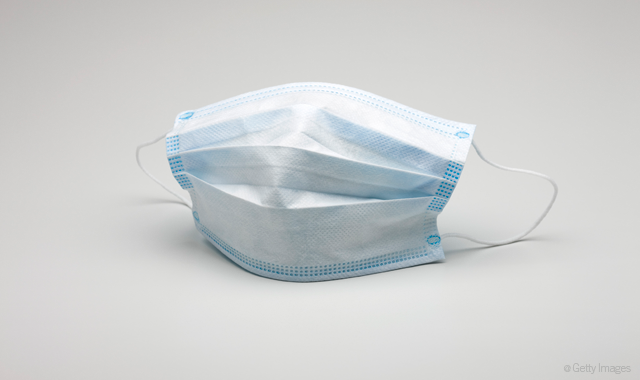How to conduct an infection control risk assessment in your office
Risk assessment is a great way to discover where your practice may be falling short.

Infection control should be an essential consideration for any practice, but knowing where deficiencies lie – and how best to correct them - may be overwhelming for many practitioners.
Taking the right measures need not be difficult. It starts with having a point-person responsible for all things infection control-related and then preparing, following and continually evaluating a good plan.
Do you have a problem?
“A thorough and effective infection control risk assessment of the dental office begins with knowledge,” says Karen Daw, an infection control consultant and former clinic health and safety firector for The Ohio State University College of Dentistry. “The CDC’s ‘Guidelines for Infection Control in Dental Health-Care Settings – 2003’ states that ‘Dental practices should develop a written infection-control program to prevent or reduce the risk of disease transmission’ and that each office should have an infection control coordinator ‘knowledgeable or willing to be trained’ to coordinate the program, and to evaluate the policies and procedures of the program on a day-to-day basis. This is a huge undertaking. In order to ensure success, the infection control coordinator must understand what is being assessed and why.”
Related article: 5 considerations for personal protective equipment
She recommends two key resources to help with the practice’s infection control endeavors.
“The first great resource is the Centers for Disease Control and Prevention,” Daw says. “On this site, a person conducting an infection control risk assessment will find the 2003 guidelines as well as the latest publication, ‘The Summary of Infection Prevention Practices in Dental Settings - Basic Expectations for Safe Care.’ Here, they will find checklists. Part one assesses written policies and procedures like safe injection practices and respiratory hygiene, to name a few. Part two is where the rubber meets the road and assesses whether the practice is doing what they say they’re doing. Utilizing this checklist, the infection control coordinator can observe and then document areas in need of enhancement and areas that are doing well. The checklist is even available as a free app for iOS and Android devices.

“Another great resource can be found at www.osap.org,” she continues. “The Organization for Safety, Asepsis and Prevention (OSAP) is an organization consisting of clinicians, educators, researchers and industry representatives. Their mission is to ensure the safest dental visit by advocating for infection-free delivery of oral healthcare. Members have access to several checklists that can be utilized to conduct an effective infection control risk assessment. Even better, there are checklists for your traditional brick-and-mortar offices as well as mobile dental clinics.”
If a problem has been identified, the next steps involve how the practice should respond.
Written safety procedures
First, the practice should develop an exposure control plan that puts in writing the steps necessary to correct the deficiencies.
Trending article: 6 stories that prove the dental industry is the weirdest
“This would be the procedures to protect their workers from exposure to potentially infectious items,” says Mary Borg-Bartlett, president of SafeLink Consulting. “So, the procedures would include the precautions that the worker needs to take, for example, during patient treatment when they’re cleaning the dirty instruments and preparing them for sterilization, and when they are disposing of biohazardous sharps or any sharp items that could be infectious.”
Having a written procedure allows the practice to have a concrete plan of action.
“You have to have the written procedures so that you have something to survey and audit against,” she says.
OSHA or the CDC are the best places to get those procedures.
“First, they should go to OSHA’s blood-borne pathogen standard that provides them with the governmental requirements,” Borg-Bartlett says. “That will help them identify the risks. Also, they should reference the CDC’s 2003 and 2016 guidelines for dentistry, which provide more detailed information specific to dentistry on how to protect workers.”
Continue to page two to read more...
Review the plan
Once a written plan is in place, that blueprint must be disseminated and shared with staff.
“They need to review those procedures with their workers and train workers who will be performing the tasks,” Borg-Bartlett says. “OSHA requires training before they perform the work assignment where the exposure could occur. Then, OSHA requires that the employer retrain annually and also review their procedures annually. Their entire exposure control plan must be reviewed annually.”
Trainings and evaluations should not be limited to once a year, however.
More from the author: The 5 most common infection control breaches
“There would also be additional training when needed. For instance, if they had an injury or an exposure incident, they would want to investigate the cause of the injury and review the safety procedures with the workers in hopes of preventing another exposure incident,” she adds.
It is not sufficient to conduct training just for the sake of being able to say it was done. It must be led by someone knowledgeable in infection control issues.
“It’s important that the person conducting the assessment is knowledgeable and willing to take on this huge responsibility,” Daw says. “While there is currently no formal certification process for this, the person assigned this responsibility should attend infection control courses, read articles, visit resources and gather as much information as possible about infection prevention for the dental office. This doesn’t mean the assessment is limited to being conducted by someone who works in the office. I liken this to ‘grading your own paper.’ Third-party verification can provide a much-needed perspective and can help to identify pain points.”
Be proactive
Staff members should feel a part of the infection control activity.
“Being proactive means regularly discussing the infection control guidelines in their daily huddles or any other type of regular meetings that allows them to keep the importance of safe work practices in front of the workers,” Borg-Bartlett says. “It’s important that the lines of communication be open between staff and management. In most cases, the staff will be more knowledgeable about the risks than anyone else because they are performing those tasks day after day. Also, the staff needs to feel comfortable expressing their concerns with management. Management must reinforce to workers that they need this communication and will act on correcting situations that put workers at risk. If staff has recommendations from time to time but never see management taking any action, then they’re going to stop offering suggestions.
“Keep that line of communication open and the need for safety in front of the workers,” she continues. “This could be as simple as posting relevant articles on the bulletin board in the lunchroom or handing out flyers containing infection control information. Use the daily huddle to ask the question, ‘Did anything happen yesterday that we need to discuss in regard to your safety?’”
And the best way to get team members involved and invested in the process is to remind them that this is for their safety.
Trending article: Why cosmetic dentistry matters to every practice
“You have to make them realize that your primary concern is for their safety,” Borg-Bartlett says. “And ultimately, if they are safe, then patients are safe.”
One tool that Borg-Bartlett has found effective is asking staff to share any personal experiences that might be of value to their colleagues.
“Make it more personal,” she says. “You don’t want to get into the privacy of the staff member, but if someone has something that’s happened in a work experience, have them share how this could happen and then talk about how it could have been prevented.”
Talking about an actual experience can help prevent a similar problem from repeating itself in your practice.
“OSAP has a newsletter on infection control in the dental environment and in each one they provide a scenario for the reader to review,” she says. “After reading the scenario, you identify what they should have done differently. That type of exercise can be very helpful in teaching workers the safe work practices.”
Continue to page three to read more...
Auditing
Next, assess how are you’re doing – has it been effective? If not, what needs to change?
“Conduct a survey or an audit of the procedures,” Borg-Bartlett says. “That’s the only way, really, other than seeing that there have been no injuries. But just because there’ve been no injuries reported doesn’t mean that there haven’t been any incidents that should have been reported. When conducting a survey of the written procedures, you should use those procedures to audit against. And also, the staff will see that their compliance with these procedures is being monitored.”
You might also want to consider bringing in an outside consultant. That can help prevent organizational tunnel vision.
Related reading: 5 resons you need an infection prevention coordinator
“Did you know that Disney utilizes a paint color called Go Away Green for its less flattering parts of the park such as fences and garbage cans?” Daw says. “The shade is meant to help things blend in with the landscaping. Sometimes infection control breaches can be overlooked because a particular process has become part of the scenery. Partnering with a consultant can help ensure nothing is overlooked. In fact, infection control assessments are what many consultants do full-time, so they know what to look for, even if we think we’re 100 percent.”
Documentation
Finally, writing down your infection control missteps – great and small – can help you learn from your mistakes.
“Document all exposures or even a near miss,” Borg-Bartlett says. “Even if a near-miss incident does not require documentation by a governmental agency, like OSHA. A near miss can later result in an injury if it’s not dealt with right away. But if there is an injury, start your procedure to document what happened. Use an investigation form so you ensure you gather all the information required to effectively assess the incident. The point of the investigation is to ensure that your written procedures are being followed and if not what needs to be addressed. Find out the true root cause of what caused the injury in order to take corrective actions to prevent it from happening again.
“A good example is the documentation of a needlestick,” she adds. “That incident would require implementation of OSHA’s post-exposure management procedure, along with an annual review of what safe work practices or safer devices can be used to prevent future needlesticks.”
Risk assessment is a critical way to discover where your practice may be falling short. And, in the event there is a breach, implementing the proper steps is the best way to avoid repeating them in the future.
Maximizing Value: The Hidden Benefits of Preventing Hospital-Acquired Pneumonia Through Oral Hygiene
September 10th 2024Originally posted on Infection Control Today. Hospital-acquired pneumonia (HAP) is a significant infection prevention concern, leading to high patient mortality, increased health care costs, and ICU usage. Oral hygiene is an effective preventive measure.